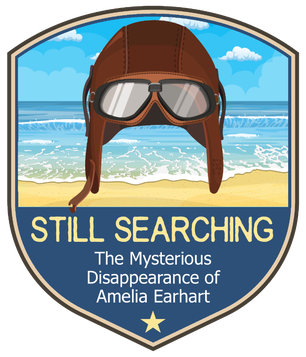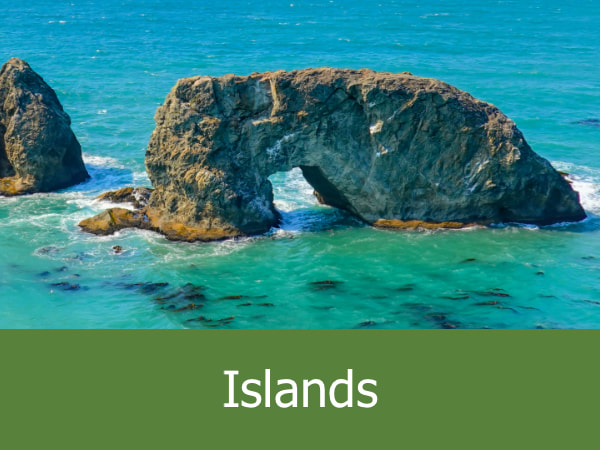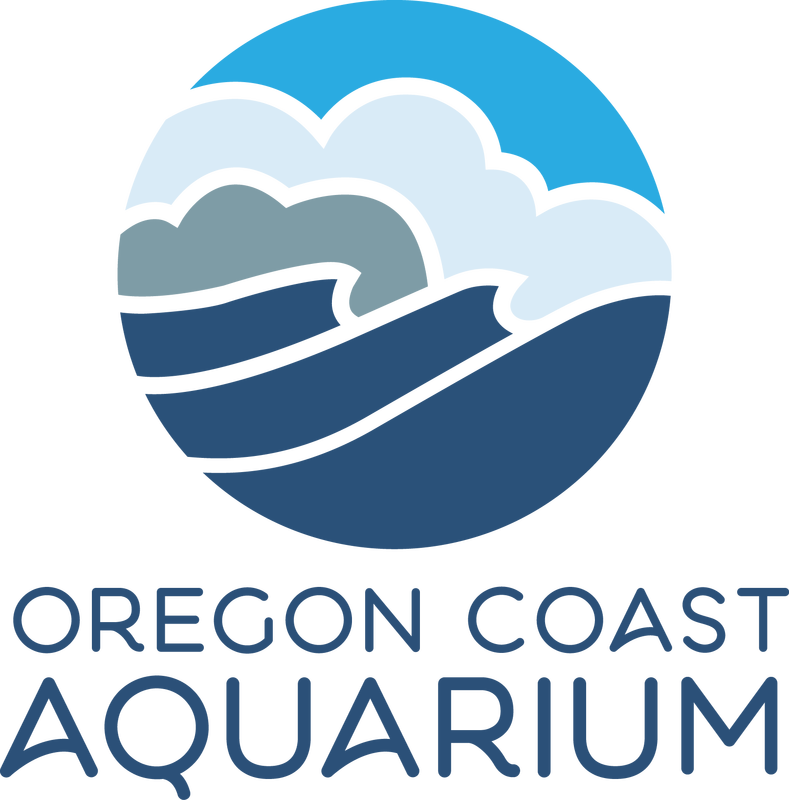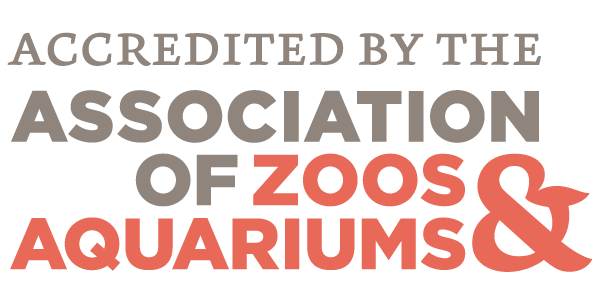Navigate:VIRTUAL EXPLORATIONS > STILL SEARCHING: THE MYSTERIOUS DISAPPEARANCE OF AMELIA EARHART
|
Part 4: High Tech and Trained Dogs Join the Hunt for EarhartPosted on June 19, 2018
The Oceanscape Network recently sat down with Ric Gillespie, Executive Director of The International Group for Historic Aircraft Recovery, for an update on their ongoing investigation of the disappearance of aviator Amelia Earhart. During their most recent visits to Nikumaroro, an island in the South Pacific, the TIGHAR team were unsuccessful at finding wreckage from Earhart’s Lockheed Electra aircraft off the reef (see Part 3: Back to Nikumaroro for details). Despite this setback, Ric reported some amazing progress has been made by examining old reports and forensic records on the skeletal remains of a “castaway” found on the island in 1940. |
That year, just three years after Earhart vanished, a British Colonial Service officer named Gerald Gallagher recovered a skull and various other bones from an area of the island that would later be known as the “castaway’s campsite.” Although Gallagher didn’t know if the remains were those of Earhart, he did know that the famous aviatrix had vanished somewhere in the vicinity and that the US Navy had included Nikumaroro (called Gardner Island at the time) as part of its search and rescue area. The discovery of the bones was coincidental enough that Gallagher alerted his superiors and asked for further instructions. At the time, the relationship between the British and the Americans was very fragile. Britain was desperately hoping that the United States would enter the fight against the Japanese and Germans and were unwilling to create any controversy that might upset Anglo-American relations. Gallagher was ordered to secretly transfer the bones to a British medical school on Fiji where they were examined, determined to be those of a Polynesian man, and were either lost or destroyed.
Decades passed without anyone knowing about the bones until 1998, when TIGHAR found the original medical examiner’s notes in an obscure archive in England. The notes were passed along to two renowned forensic experts, Dr. Karen Burns and Dr. Richard Jantz, who reexamined the data using modern scientific techniques. Both experts concluded that the original analysis was wrong and that the skeleton was actually of a woman of European descent. Since no Caucasian woman other than Earhart was ever known to be in the area of Nikumaroro prior to 1940, the implications were startling.
When these conclusions were publicly challenged in 2015, TIGHAR and Dr. Jantz decided to revisit the original report and conduct additional forensic testing which had not existed twenty years earlier.
Once again, the conclusions were startling.
Decades passed without anyone knowing about the bones until 1998, when TIGHAR found the original medical examiner’s notes in an obscure archive in England. The notes were passed along to two renowned forensic experts, Dr. Karen Burns and Dr. Richard Jantz, who reexamined the data using modern scientific techniques. Both experts concluded that the original analysis was wrong and that the skeleton was actually of a woman of European descent. Since no Caucasian woman other than Earhart was ever known to be in the area of Nikumaroro prior to 1940, the implications were startling.
When these conclusions were publicly challenged in 2015, TIGHAR and Dr. Jantz decided to revisit the original report and conduct additional forensic testing which had not existed twenty years earlier.
Once again, the conclusions were startling.
The 99% Similarity
“We were actually grateful for the criticism,” Ric told the Network, “because it forced us to go back and reexamine the original results.”
Rather than refuting the original findings however, TIGHAR and its forensic team came up with even more compelling evidence that the Nikumaroro castaway was likely Amelia Earhart.
One of the scientific methods they employed was comparing the original measurements of the castaway’s bones to Earhart’s stature. The trick was in obtaining accurate calculations of Earhart’s skeleton when no skeleton was available.
Here, forensic imagining specialist Jeff Glickman suggested using historical photos of Earhart and comparing her stature against measurable objects seen in the same photos. In one case, Glickman purchased an old oil can off eBay which was identical to one Earhart was shown holding in a 1937 photo. By measuring the oil can, Glickman was able to accurately calculate the length of Earhart’s arm bones. The measurements were an exact match to the measurements of the castaway — and even included a physiological anomaly in which both the castaway and Earhart’s upper arm bones (the humerus) were shorter than normal.
These results were returned to Dr. Jantz who also used a sophisticated computer program called Fordisc to identify the sex, ancestry and stature of the castaway. Dr. Jantz’s findings were ultimately published in Forensic Anthropology in early 2018 and concluded that “the [castaway’s] bones have more similarity to Earhart than to 99 percent of individuals in a large reference sample.”
Put more simply, until another woman of Earhart’s stature and ethnicity is discovered to have gone missing in the area of Nikumaroro in the late 1930s, the most reasonable conclusion is that the castaway was Earhart.
Rather than refuting the original findings however, TIGHAR and its forensic team came up with even more compelling evidence that the Nikumaroro castaway was likely Amelia Earhart.
One of the scientific methods they employed was comparing the original measurements of the castaway’s bones to Earhart’s stature. The trick was in obtaining accurate calculations of Earhart’s skeleton when no skeleton was available.
Here, forensic imagining specialist Jeff Glickman suggested using historical photos of Earhart and comparing her stature against measurable objects seen in the same photos. In one case, Glickman purchased an old oil can off eBay which was identical to one Earhart was shown holding in a 1937 photo. By measuring the oil can, Glickman was able to accurately calculate the length of Earhart’s arm bones. The measurements were an exact match to the measurements of the castaway — and even included a physiological anomaly in which both the castaway and Earhart’s upper arm bones (the humerus) were shorter than normal.
These results were returned to Dr. Jantz who also used a sophisticated computer program called Fordisc to identify the sex, ancestry and stature of the castaway. Dr. Jantz’s findings were ultimately published in Forensic Anthropology in early 2018 and concluded that “the [castaway’s] bones have more similarity to Earhart than to 99 percent of individuals in a large reference sample.”
Put more simply, until another woman of Earhart’s stature and ethnicity is discovered to have gone missing in the area of Nikumaroro in the late 1930s, the most reasonable conclusion is that the castaway was Earhart.
Forensic Dogs Arrive on Nikumaroro:
Despite these compelling results, Ric notes that there’s more work to be done.
“It would be nice to have bones from which we would get DNA which we can compare to Earhart’s DNA,” he said. “One of the thoughts was maybe we could use forensic dogs to find bones on Nikumaroro which we were unable to find through conventional archaeological digging. Well, the trouble is that it’s a difficult place to take dogs to… So if we can’t bring dogs to the island, maybe we can bring the island to the dogs.”
Back in 2015, a TIGHAR anthropologist attempted to do just this by collecting soils samples from around Nikumaroro — including at the site they believe Gallagher found the castaway’s bones — and returning them to California to see how forensic dogs reacted to them. (see Part 3: Back to Nikumaroro for details) These dogs would react if they smelled the chemicals left behind by a decomposing human body in the collected soil samples. Although the results of this test were inconclusive, the National Geographic Society was intrigued enough to fund bringing a team of forensic dogs to Nikumaroro in the summer of 2017.
Ric reported that the dogs functioned well on the island and reacted strongly to the site where they believe the castaway’s bones were found. Additional soil samples were removed from the area in the hopes that DNA might be extracted from the dirt itself.
“Nikumaroro is a terrible environment for the preservation of DNA, so this is a long shot at best,” Ric confessed, but quickly added, “All we can do is continue to do the science and see where it leads us."
For more information about TIGHAR’s Earhart Project, visit their website by clicking here. Additional updates on this virtual exploration will be posted on the Oceanscape Network as they become available.
Related Feature: Nikumaroro’s Secret Shipwreck
“It would be nice to have bones from which we would get DNA which we can compare to Earhart’s DNA,” he said. “One of the thoughts was maybe we could use forensic dogs to find bones on Nikumaroro which we were unable to find through conventional archaeological digging. Well, the trouble is that it’s a difficult place to take dogs to… So if we can’t bring dogs to the island, maybe we can bring the island to the dogs.”
Back in 2015, a TIGHAR anthropologist attempted to do just this by collecting soils samples from around Nikumaroro — including at the site they believe Gallagher found the castaway’s bones — and returning them to California to see how forensic dogs reacted to them. (see Part 3: Back to Nikumaroro for details) These dogs would react if they smelled the chemicals left behind by a decomposing human body in the collected soil samples. Although the results of this test were inconclusive, the National Geographic Society was intrigued enough to fund bringing a team of forensic dogs to Nikumaroro in the summer of 2017.
Ric reported that the dogs functioned well on the island and reacted strongly to the site where they believe the castaway’s bones were found. Additional soil samples were removed from the area in the hopes that DNA might be extracted from the dirt itself.
“Nikumaroro is a terrible environment for the preservation of DNA, so this is a long shot at best,” Ric confessed, but quickly added, “All we can do is continue to do the science and see where it leads us."
For more information about TIGHAR’s Earhart Project, visit their website by clicking here. Additional updates on this virtual exploration will be posted on the Oceanscape Network as they become available.
Related Feature: Nikumaroro’s Secret Shipwreck












